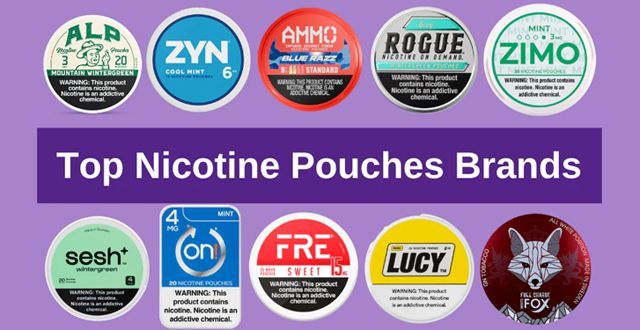Young males, prior cigarette or e-cigarette users most likely to use oral nicotine pouches
The nicotine industry is constantly innovating, delivering new products to the market – and that keeps public health researchers busy as they work to understand the implications of each new offering.
A team from MUSC Hollings Cancer Center has just published a paper in JAMA Network Open describing oral nicotine pouch usage – one of the first papers to look at how common this product is.
Hollings researcher Amanda Palmer, Ph.D., a research instructor in the Department of Public Health Sciences, led the study.
“These products were introduced just a few years ago, so they're still pretty new, and a lot of the surveys have only recently started tracking usage,” she said. “So all of these data are really new in terms of what the use prevalence is. But it’s good to have that baseline for future research because – like we saw with e-cigarettes – these novel products really seem to be taking off. And that can have some important implications for public health.”
Article Summary:
- Oral Nicotine Pouches.
Oral nicotine pouches are similar to Swedish snus, or snuff, but they use a synthetically-produced, crystalized nicotine salt powder – similar to what’s used in nicotine replacement medications like gum and lozenges – rather than actual tobacco leaves. The powder is in a small pouch that is placed between the lip and the gum, where the nicotine is then absorbed into the body. Popular brand names include Zyn, Rogue and Lucy. - Young male nicotine pouch use is increasing.
Those most likely to use oral nicotine pouches were males in late adolescence or early adulthood. “The highest odds of use were among people who were already using or had in the past used other tobacco products like cigarettes, e-cigarettes or smokeless tobacco,” Palmer said. Although overall usage was low – less than 1% of adolescents and 3.34% of adults reported ever using oral nicotine pouches – the few other reports that exist as reference points seem to indicate that usage is increasing. - Smoking, pouches and overall health.
“Public health has done a really great job at putting out messaging that smoking is one of the most harmful things you can do for your health, and that quitting has all of these great benefits,” she continued. “Unfortunately, quitting smoking is still really hard to do, and I think a lot of people have these health concerns and are looking for alternative approaches to improving their health.” - Health risks and social problem.
“Just like with e-cigarettes, these also contain nicotine, which is addictive,” Palmer said. “There can be some negative outcomes from that. Not only from a health standpoint, but there's psychological distress that can come with nicotine dependance. There are social problems. There's financial strain. So we want to also monitor some of the potentially aversive effects of pouches and potentially come up with ways to mitigate some of those risks for people.”












